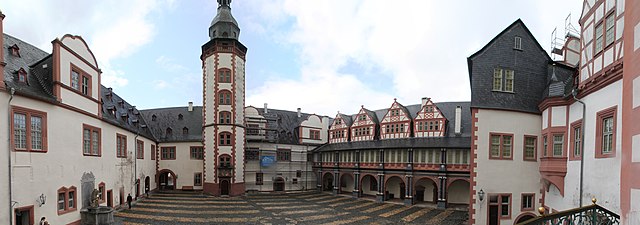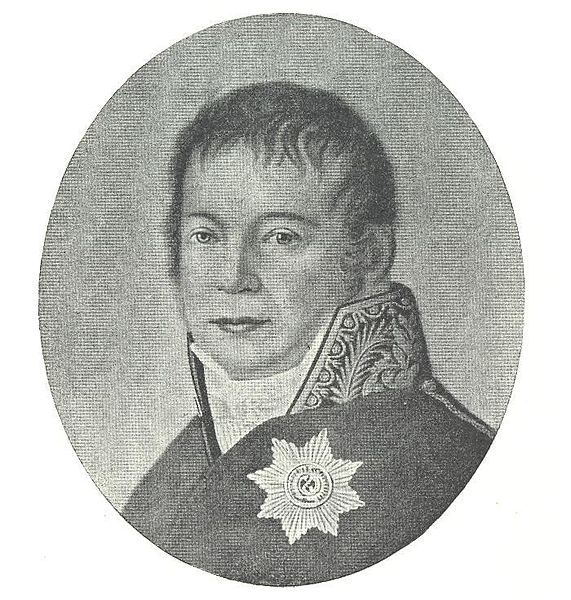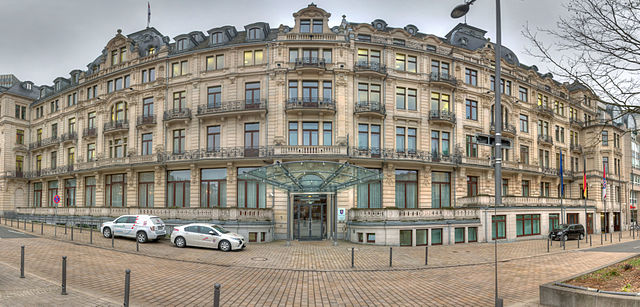The Duchy of Nassau was an independent state between 1806 and 1866, located in what is now the German states of Rhineland-Palatinate and Hesse. It was a member of the Confederation of the Rhine and later of the German Confederation. Its ruling dynasty, now extinct, was the House of Nassau. The duchy was named for its historical core city, Nassau, although Wiesbaden rather than Nassau was its capital. In 1865, the Duchy of Nassau had 465,636 inhabitants. After being occupied and annexed into the Kingdom of Prussia in 1866 following the Austro-Prussian War, it was incorporated into the Province of Hesse-Nassau. The area today is a geographical and historical region, Nassau, and Nassau is also the name of the Nassau Nature Park within the borders of the former duchy.
Declaration of Nassau's sovereignty, 30 August 1806
Schloss Weilburg, residence of the Princes of Nassau-Weilburg before 1816, and a residence of the Dukes of Nassau thereafter
Schloss Biebrich, seat of the Dukes of Nassau from 1817 to 1841 and their summer residence thereafter
Ernst Franz Ludwig Freiherr Marschall von Bieberstein, Chief Minister of Nassau (1806–1834)
Hesse or Hessia, officially the State of Hesse, is a state in Germany. Its capital city is Wiesbaden, and the largest urban area is Frankfurt, which is also the country's principal financial centre. Two other major historic cities are Darmstadt and Kassel. With an area of 21,114.73 square kilometers and a population of over six million, it ranks seventh and fifth, respectively, among the sixteen German states. Frankfurt Rhine-Main, Germany's second-largest metropolitan area, is mainly located in Hesse.
River Lahn in Runkel
Taunus landscape with Großer Feldberg in the center of the background
The state chancellery building in the capital city of Wiesbaden
Frankfurt am Main skyline








